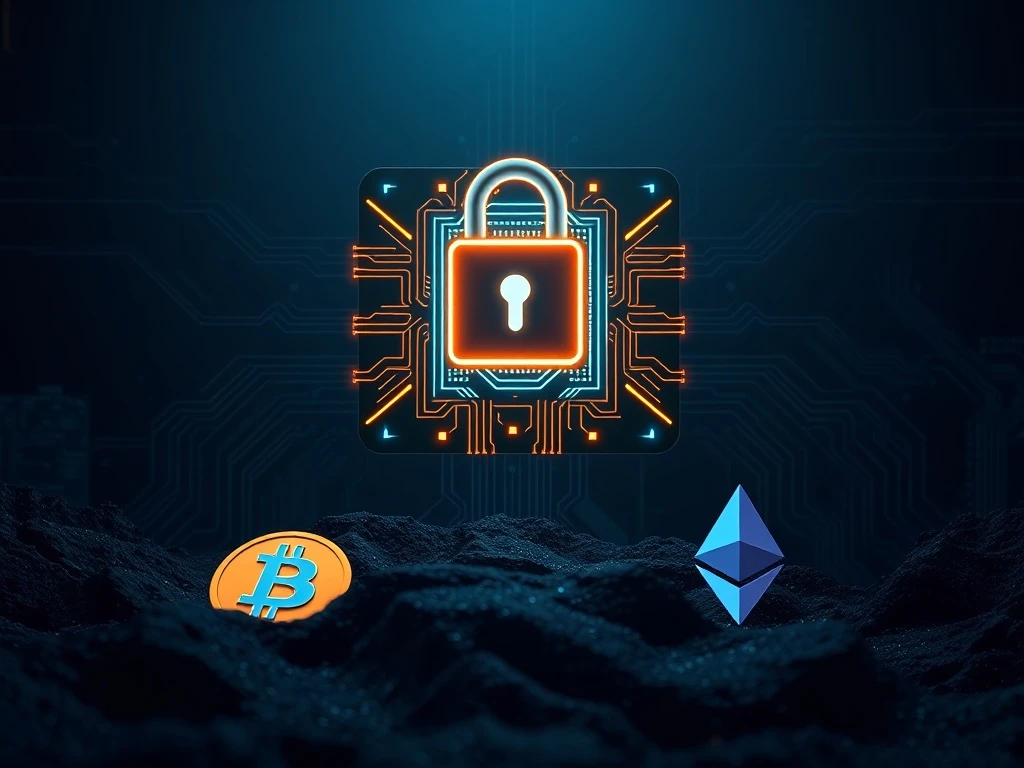Urgent Warning: Quantum Computing Threatens Trillions in Crypto Assets, SEC Task Force Responds

The digital asset world faces an unprecedented challenge. A silent, yet powerful, threat looms on the horizon: quantum computing. This emerging technology could potentially shatter the cryptographic foundations of popular cryptocurrencies like Bitcoin and Ethereum. As a result, the US Securities and Exchange Commission’s (SEC) Crypto Assets Task Force is now reviewing critical proposals. These plans aim to safeguard the vast sums invested in digital assets from future quantum computing threats. This development highlights a crucial moment for quantum computing crypto security.
The Looming Quantum Computing Crypto Threat to Digital Assets
Recent warnings highlight a significant risk. A proposal submitted to the SEC’s Crypto Assets Task Force details how quantum computing could compromise Bitcoin, Ethereum, and the broader digital asset ecosystem. Without robust safeguards, trillions of dollars could be exposed. Daniel Bruno Corvelo Costa authored this submission, titled the Post-Quantum Financial Infrastructure Framework (PQFIF). It outlines a clear roadmap. This plan aims to transition the cryptographic underpinnings of digital assets, including Bitcoin (BTC) and Ether (ETH), to quantum-resistant standards. Consequently, this proactive step is vital for future digital asset protection.
The PQFIF proposal, issued on Wednesday, emphasizes the severe implications. Advancements in cryptographically relevant quantum computers (CRQC) pose a grave danger. These machines could “break the fundamental security that protects trillions of dollars in assets.” This would lead to systemic risk, catastrophic investor losses, and a complete erosion of market confidence. Moreover, a critical concern is the ‘Harvest Now, Decrypt Later’ threat. Adversaries are already collecting sensitive encrypted data. They plan to unlock this data once quantum breakthroughs arrive. This strategy is a growing concern across cybersecurity circles globally.
Understanding the ‘Harvest Now, Decrypt Later’ Strategy
- Data Collection: Malicious actors actively gather encrypted data today.
- Future Decryption: They store this data, anticipating the arrival of powerful quantum computers.
- Vulnerability: Once quantum machines mature, they could decrypt previously collected information, compromising past and present security.
SEC Crypto Security: Urgent Calls for Action
The proposal urges immediate action to counter the quantum computing threat. It recommends several key measures. First, automated vulnerability assessments of digital asset platforms are crucial. Second, high-risk systems, such as institutional wallets and exchanges, need prioritization. Third, a phased migration strategy is essential. This approach would use both classical and post-quantum cryptography. Notably, the plan integrates standards finalized by the National Institute of Standards and Technology (NIST) in 2024. These include FIPS 203–205 and HQC as a backup, ensuring comprehensive SEC crypto security.
A sudden quantum breakthrough presents a systemic risk. Experts warn that “Q-Day” could arrive as early as 2028. This is the point when quantum machines can crack Bitcoin’s encryption. Such an event could cause massive investor losses. It would also lead to operational chaos across custodians and payment processors. Market confidence would suffer a severe breakdown. Therefore, establishing a quantum-resilient digital asset ecosystem is paramount. It will secure investor assets and ensure the long-term integrity of US capital markets, according to the proposal. This foresight is critical for maintaining trust in the financial system.
El Salvador has already taken steps. The country split its $678 million Bitcoin holdings across 14 wallets. This move aims to reduce quantum risk. Such actions highlight the growing awareness and proactive measures being taken globally.
Protecting Bitcoin and Ethereum: Quantum-Resistant Upgrades
The Bitcoin quantum threat is not going unnoticed by developers. In July, they proposed a new Bitcoin Improvement Proposal (BIP). Titled “Post Quantum Migration and Legacy Signature Sunset,” this BIP calls for phasing out current signature schemes. It advocates for adopting quantum-resistant alternatives instead. The proposal outlines a clear, phased migration. Initially, it would prevent users from sending funds to older, vulnerable addresses. Approximately five years later, it would freeze all Bitcoin stored in such addresses, rendering them unspendable. This innovative approach seeks to future-proof the network.
Similarly, the Ethereum quantum safety is a pressing concern. While not explicitly mentioned in the BIP, the underlying principles of quantum-resistant cryptography apply to Ethereum and other digital assets. The goal is to fortify these networks against future attacks. David Carvalho, CEO of Naoris Protocol, shared his opinion with Crypto News Insights. He stated that the rise of quantum computing poses the most serious threat to Bitcoin’s security yet. He believes it could break its cryptographic protections within five years or less. This emphasizes the urgency for both Bitcoin and Ethereum to adapt.
The industry is actively exploring solutions. Magazine articles, such as ‘Bitcoin vs. the quantum computer threat — Timeline and solutions (2025–2035),’ are already discussing long-term strategies. These discussions are vital for guiding the development of robust, quantum-resistant technologies. The collaborative effort across the crypto community and regulatory bodies is essential to mitigate this evolving risk.
The Path Forward for Digital Asset Protection
The SEC’s Crypto Assets Task Force plays a pivotal role in this transition. Their review of the Post-Quantum Financial Infrastructure Framework marks a critical step. Implementing these recommendations will help secure investor assets and maintain market stability. The transition will involve complex technical challenges. However, the benefits of proactive digital asset protection far outweigh the difficulties. This ensures the long-term viability of the cryptocurrency ecosystem. The global financial landscape depends on secure and resilient digital infrastructure.
The collective effort of developers, regulators, and industry experts is crucial. By embracing quantum-resistant cryptography, the digital asset space can overcome this formidable challenge. This proactive stance will build a more secure and trustworthy future for cryptocurrencies worldwide. The ongoing discussions and proposals reflect a serious commitment to protecting digital wealth from the quantum era.







